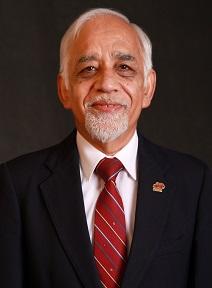Dr. Raj N. Singh is currently Regents Professor, Williams Companies Distinguished Chair Professor, Director Energy Technologies Programs and Head of School of Materials Science and Engineering at Oklahoma State University (OSU). He received his Sc.D. degree from Massachusetts Institute of Technology, M.S. from University of Manitoba and B.S. from IIT Kanpur all in Materials Science and Engineering. He worked for several years at Argonne National Laboratory, GE-R&D Center and University of Cincinnati before joining OSU in 2012.
Since joining Oklahoma State University he led the creation of a new School of Materials Science and Engineering (MSE) offering advanced M.S. and Ph.D. degrees. This is the first and only such degree granting program in the state of Oklahoma for training and educating students with graduate degrees related to advanced materials for energy technologies, nanotechnologies, electronics, medicine and aerospace. Graduate students and research faculty in his research group are currently engaged in cutting edge research and graduate education on materials for fuel cells, batteries, nanomaterials, drug delivery, composites and supercapacitors.
He has made outstanding contributions to the field of Materials Science and Engineering as recognized by his recent induction as fellow of the National Academy of Inventors by The Deputy U.S. Commissioner for Patent Operations from the United States Patent and Trademark Office in 2015. This is a highly prestigious professional distinction accorded to academic inventors who have demonstrated a prolific spirit of innovation in creating or facilitating outstanding inventions that have made a tangible impact on quality of life, economic development and the welfare of society. Singh’s inventions have been used in the development of many products such as ceramic matrix composites (CMCs) for more efficient aircraft engines, more powerful sodium-sulfur batteries utilized for energy storage systems, and novel electrolyte retainers and self-repairing glasses for molten carbonate and solid oxide fuel cells. He has innate ability to invent new materials and their novel processing methods. While at GE-R&D he led the pioneering and original development and invention of melt infiltration (MI) composite technology for making fully dense, net- and complex-shape silicon carbide fiber-reinforced CMCs. The MI technology has been commercialized by GE Aviation for applications in the GE LEAP engine for Boeing 737 and AirBus A320Neo starting in 2016 and GE9x engines for the new Boeing 777 starting in 2019. These will be the world’s first commercial jet engines with MI-CMCs used as structural turbine components.
Raj has been recognized for his engineering leadership through his scholarly activities (250 journal articles, 95 referred reports, and 220 presentations), pioneering inventions of MI composite processing technology leading to commercialization (27 granted patents), for graduating 25 students with MS and PhD degrees and through numerous professional awards in recognition of his engineering leadership such as National Academy of Inventors Fellow (2015); Albert Sauveur Achievement Award of ASM International (2016); Regents Professor (OSU 2015); Fellow of the ASM International (1996); Fellow of the American Ceramic Society (1992); Fellow of Graduate School (UC 2007); Whitney Gallery of Technical Achievers GE-CR&D (1990); Publication Awards GE-CR&D (1984, 1988); Patent Awards GE-CR&D: Bronze, Silver, and Gold Patent Medallions (1983, 1987, 1988). He also serves as member of editorial boards of 5 international journals.

